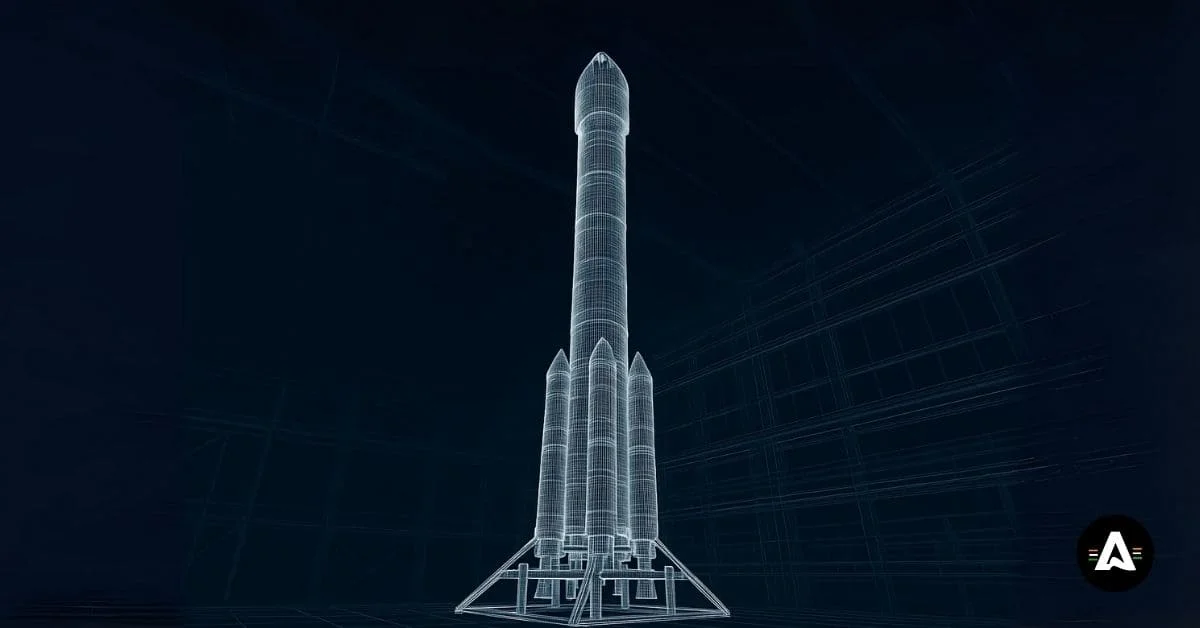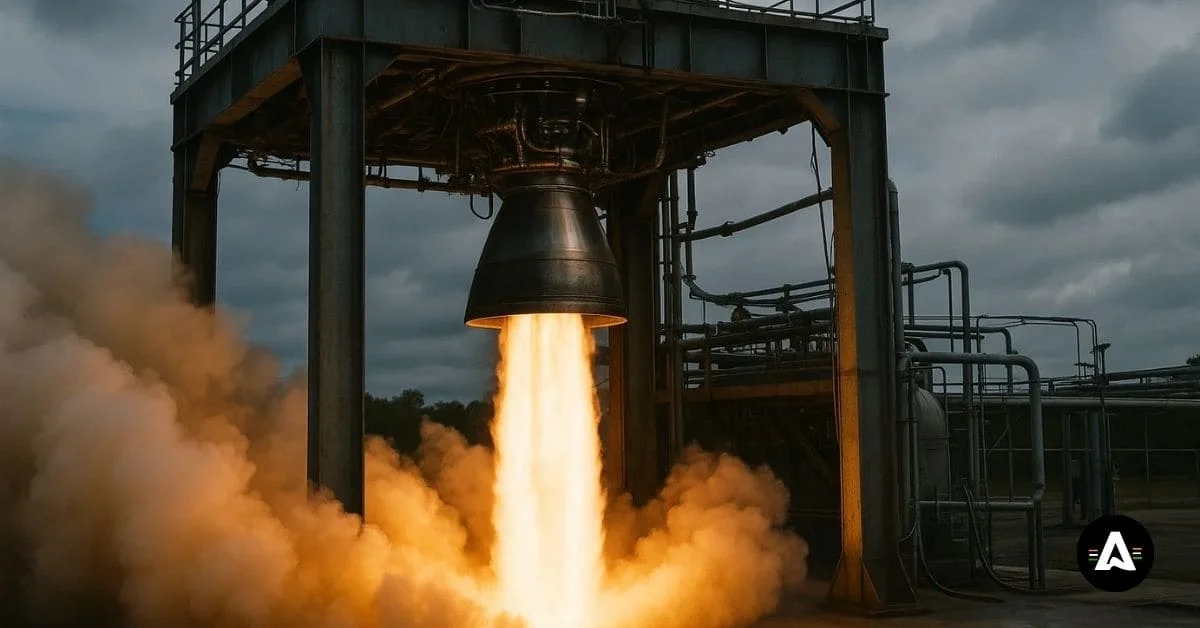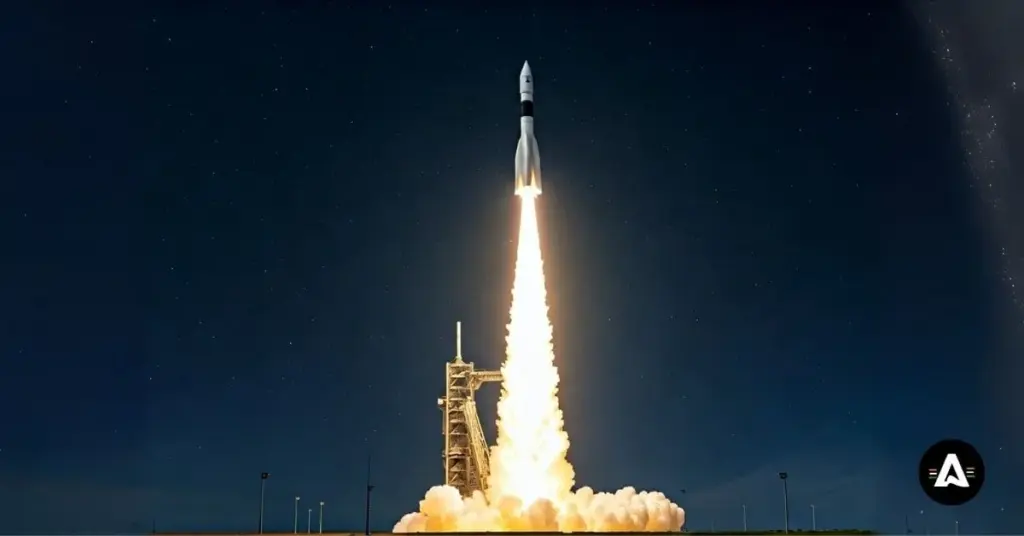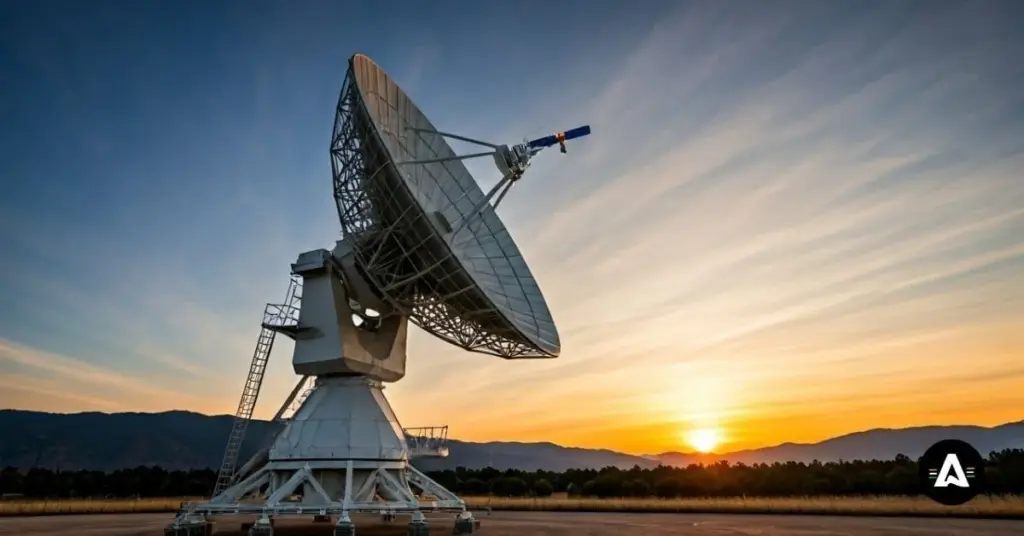How Rockets Work: A Beginner's Guide to Rocket Science

How Rockets work – with well-timed blasts inside the engines. This makes thrust. Thrust is a strong push that sends rockets up into the sky.
A spacecraft must go fast enough to reach escape velocity. That speed is needed for space flight because it lets the spacecraft get away from Earth’s pull.
Thrust and orbital velocity help rockets move into steady orbits. They also help some rockets go far into deep space.
A launch pad is where rockets start out. This pad gives a solid base that is needed for the rocket to lift off.
Rockets are important. They send satellites into space, help people get to the international space station, and let us go to new places.
A good rocket launch takes smart ideas and science. This is true for flights to the international space station and other space flight trips.
Introduction
Rocket science may look tough, but it is really based on some easy ideas. A group like NASA uses rocket science to build spacecraft. These need to go very fast and travel far. A rocket has strong engines to help with this. To make sure it flies in the right way, there has to be a lot of good planning. Many people may say it can’t be done, but rocket science makes it possible. That is how people have been able to go to the Moon. Now, there are also trips planned for Mars. When you learn how rockets work, you can understand the science in spaceflight. You also know the basics of getting a spacecraft into space.
The Basics of Rocket Science
Rockets go up when they push hot gases out the back of their engines on purpose. This push is what we call thrust. A rocket gets this thrust because of Newton’s third law. That law says that when there is an action force, there is also a reaction force. Because of this, the rocket moves ahead. The mass of the rocket is important too. A rocket that is light will go at a different speed than one that is heavy. The action force, thrust, and the mass of the rocket all help decide how it moves.
Rocket science looks at how the mass of the rocket and the forces on it come together. People who work on rockets use simple ideas from physics to make each engine and part work well. This gives every spacecraft the thrust it needs to go out and start its journey.
What Is a Rocket?
A rocket is a machine that has an engine. The main job of the rocket is to take things to space or to high places. A rocket holds fuel in tanks, and people sometimes call this fuel propellants.

When a rocket works, these propellants have a controlled explosion inside a part called the combustion chamber. This explosion sends out hot gases very fast. The gases move out from a special part called the nozzle. This fast movement out the nozzle gives the rocket thrust, so it can go up.
The nozzle and the combustion system are both very important in a rocket. They work together to push the gas out really fast. This helps the rocket move at a high speed. Because of this high speed, the rocket gets a high velocity. With this kind of velocity, the rocket can reach escape velocity. That means it will be able to move fast enough to get away from Earth’s pull.
You can think about what happens when you let the air out of a balloon. As the air goes out, you see the balloon move the other way. A rocket engine works in a way that is a lot like this. The rocket engine uses air or fuel going out to push it in the other direction. It may look like a simple idea, but a rocket engine is much more high-tech than a balloon. Today, rockets use this way to send things, like satellites, or important parts for big space trips.
The Role of Rockets in Space Exploration
Rockets let people see space with a fresh point of view. They help us learn more about the solar system. With rockets, scientists get to send a spacecraft to the international space station. We can also use rockets when we want to go far out into deep space. Without rockets, there is no way we could get very far in space.
When we want to send things like the Hubble telescope or satellites to low earth orbit, we use rockets. These rockets help us get our stuff up and out into space. If we want to go much farther, like to deep space or to Mars, we use launchers. These launchers have smart ways to push what we need farther away from Earth.
If we did not have rockets, there would be a lot we could not do with a spacecraft. Rockets help us learn more about the big bang and dark matter. They let us go out into space and see new places. With rocks, we get to find out how the universe works.
Newton’s Third Law and Rocket Motion
Newton’s third law of motion helps us see how rockets go up. This law of motion says that every action has an equal and opposite reaction. In a rocket, fast gas comes out in one way, and this push makes the rocket move the other way. The rocket gets an upward force from this.
When a rocket goes up, it is very important that all the forces on it stay in balance. A rocket needs to make more thrust than its own weight and the pull from the Earth. That is what makes it go up into space or farther away. When people who build rockets know about the law of motion, they can build better rockets. This makes space flight safer for all of us.
Understanding “For Every Action, There Is an Equal and Opposite Reaction”
Newton’s third law explains how rockets move. A rocket engine pushes out exhaust gas. This is called an action force. Because of this, the rocket moves in the opposite direction. The rocket travels in a straight line because of the force. This is why rockets go up in the opposite direction of the exhaust.
This science rule says that when there is thrust, there will be an opposite reaction. You can see this happen in your everyday life. When you jump off a skateboard, the board goes the opposite direction. This is a good example of how thrust makes something move with an opposite reaction.
When you use a rocket engine, Newton’s law says that when something pushes, something else pushes back. The rocket engine gives a strong push on the gas, and this push is called the action force. As the action force goes up, the opposite reaction gets stronger too. This opposite reaction is what pushes the rocket up into the sky with a rocket engine, helping people get out into space.
How Newton’s Third Law Powers Rocket Flight
Rocket flight works because of Newton’s third law. When you use a rocket engine, the inside of the rocket has many small blasts. These blasts push exhaust gases out of the nozzle at a high speed. This is what makes the rocket go up into the air. That’s how thrust is created.
The amount of thrust a rocket can make comes from the rocket engine and how the propellant works. When the rocket pushes its exhaust gases out faster, it gets more power to go up. This thrust gives the rocket the force it needs to take off and go high.
When the rocket has more thrust, it can move up and get away from gravity. After that, it keeps going at the right speed. The rocket will then stay on its path to where it has to go in space.
Rocket Fuel and Propulsion Systems
A rocket needs strong propellant types for rocket propulsion. In a system with liquid propellant, the fuel and liquid oxygen are mixed together. When you start ignition, this mix burns and gives power to the rocket.

Today, most rockets use a liquid propellant to fly. This setup helps the rocket make a steady amount of thrust. With this, the rocket can go up. Some rockets use a solid propellant. They can also make a steady and controlled amount of thrust. Both kinds of propellant will help the rocket get into low Earth orbit. They can even help rockets go into deep space.
Types of Rocket Fuels Used Today
Type of Fuel | Description |
|---|---|
Liquid Hydrogen | This fuel is very good at what it does. It is used with liquid oxygen to burn rockets. It must be kept very cold in special storage. |
Solid Propellant | This type is easy to use. It burns in a steady way but does not give as much power as liquid fuels. It is often used in booster rockets. |
Liquid Oxygen | This is an important igniter. It mixes with fuels and gives a lot of power. Engines keep burning even in space when this is used. |
Modern rockets burn different types of fuel. The team will choose fuel based on what the mission needs. This makes sure every rocket can work well at launch sites around the world.
The Process of Propulsion: Space Launch Explained
Propulsion is a big part of rocket science. It starts when the propellant burns inside the part called the combustion chamber. The hot gases get big, fast, and shoot toward the nozzle. These gases leave the nozzle at high speed. That makes thrust in the opposite direction. This thrust pushes the rocket forward. This happens because of the law of motion. For every action, there is an opposite reaction. When the gases come out in one way, the rocket moves in the opposite direction. That is how rockets get off the ground and change where they go when flying.
Rocket propulsion systems use several kinds of fuel. Some rockets use liquid hydrogen. Others use solid propellants. Some may use a mix of more than one type, called a hybrid combination. The way a propulsion system works, and how strong and steady it is, makes a big difference. It can shape how much payload the rocket can take, how fast it can go, and how well it does things like going faster and working in the air.
When these gases get pushed, they have a lot of kinetic energy. They move out fast from the nozzle. This fast movement gives the thrust. The nozzle is made to guide the gases the right way. This helps get the highest amount of thrust.
Fuel is always put in during this process. This helps the amount of thrust get bigger. The thrust is what helps rockets go up into the air. With enough thrust, they go faster. This is the way rockets can move up and get out into space.
Overcoming Gravity: Escape Velocity Explained
Escape velocity is the speed you need to have to get away from Earth. This is because of the force of gravity. If you want to leave and not fall back to the ground, you must go fast enough. Rockets need to reach a certain velocity to do this. That way, they can get away from the force of gravity and not come back down.
When a rocket goes at a high speed of more than 25,000 km/h, it can leave Earth. This speed is called escape velocity. A rocket needs escape velocity to make it into a stable orbit. At this speed, the rocket can get away from the planet and go out into deep space. If a rocket does not reach escape velocity, it will not have enough speed to get to a stable orbit. There is no way it can leave Earth and go into deep space without it. A rocket must hit this velocity. If not, it cannot go far from Earth.
What Is Escape Velocity and Why Is It Important?
Escape velocity is the lowest speed a rocket must have to get away from Earth’s gravity. This escape velocity is based on how big the Earth is and the kinetic energy in the rocket. At this velocity, the rocket can go out into space.
This speed is in km every second. The escape velocity on Earth is 11.2 km per second. A rocket must get to this velocity to move away from the pull of gravity. If it does not get to this speed, it will not leave the planet.
Hitting the escape velocity is very important when we want to go to space. A spacecraft, or any payload, needs to move fast enough to leave the Earth. The right velocity is needed to get to Mars or even farther out in space. This is how we go out of our planet and reach new places far up in the sky. If we have the right escape velocity, it will help us get there with our spacecraft and payload.
How Rockets Work to Achieve Escape Velocity
Rockets need to have escape velocity to leave Earth. They go up by using upward force that works against gravity. The rocket engines help the rocket get the velocity it needs to leave the planet.
When rockets go up, their velocity goes up too. They face friction from the air as they rise. A good engine design can help them keep getting faster in a smooth way.
When the escape velocity is reached, the payload in the spacecraft can go into a steady path that goes around the Earth. This will help the spacecraft get ready to go out even farther into space. The right velocity is important for them to move out and travel beyond.
Stages of a Rocket Launch
Rocket launches always start on the launch pad when there is ignition. After that, the countdown begins and the whole process gets going.
After ignition, each part of the rocket works to push it up into the sky. As the rocket climbs higher, it drops the parts that are not needed. This helps the payload get to low Earth orbit in the best way.
Countdown to Liftoff: Steps Before Launch
Before a rocket can head up into the sky, there are a few important things that must happen first. These steps help make sure the launch goes as planned and works well.
- Setup and Testing: Before the rocket can go up from the launch pad, people do a full setup and test. In this time, they check every part and system to make sure all of it is working right.
- Payload Attachment: The team puts the payload, like the satellites, science tools, or any other cargo, onto the rocket with care. This job is key, as it shows what the rocket will take into space.
- Ignition System Check: The team takes time to check the ignition well. They need to be sure it will work. The ignition is what will start the engines and make the rocket go from the launch pad.
- Countdown Initiation: The people on the ground start the countdown. A set list of things has to be checked in order as the countdown moves on. Each check must be done before the rocket can take off from the launch pad.
These steps are very important to help get the rocket ready at launch sites. Everything you do is important for the mission. These steps make sure the rocket has a safe and smooth start when it goes into space.
The Phases of a Rocket’s Journey Into Space
Rocket journeys start when the rocket takes off from the launchers. After that, it gets faster so it can go into low Earth orbit. Then, the rocket goes up higher, moving into space, and begins its space flight.
As the rocket gets faster, some of its parts fall off. This lowers the mass of the rocket. The rocket will go into a stable orbit when its height and speed match in the right way.
Now, rockets can change what they do as they fly. This is good for the safety of people and also helps science in space flight. It lets people who want to reach new goals in space have more options.
Conclusion
To sum up, when you learn about how rockets work, you start to see how cool space travel can be. It all begins with Newton’s Third Law. This law tells us a lot about rockets. There is other important stuff too, like the kind of fuel the rocket uses and the way engines push the rocket. Each part is needed. Every part makes the rocket go up into space.
If you know about escape velocity, you can see why rockets have a hard time getting away from Earth’s gravity. Rocket science is getting better every year. It helps people go after new goals as we try to find out new things about the world and beyond.
If you want to know more about rocket science, escape velocity, or any other thing you like, you can get a free talk. Do not wait if you want to learn more about velocity or anything else. You can find out what you want to know.
Frequently Asked Questions
Yes, rockets can work in space, even if there is no air. They push out exhaust gases to make thrust. This is what helps the rocket move. Because of this, space flight is possible. A rocket can go through space, even though there is no air or an atmosphere.
Rockets need a lot of fuel because they are very big. The gravity on Earth is strong, and this makes it hard for the rocket to lift off. For a rocket to leave the ground, it has to go fast. Thrust is the force that helps the rocket move up. The fuel in the rocket is called propellants. This fuel gives the rocket the push, or thrust, it needs. With this push, the rocket gets past gravity and out of the atmosphere.
The type of propellant you pick is very important for a rocket. The kind of propellant you use can decide how much energy the rocket has, and how easy it is to control. For example, if you use liquid propellant, you can change the rocket’s thrust while it is flying. But when you use solid propellant, it is easier to handle and gives steady power. Each type of propellant helps the rocket get up and go into the sky in its own way.
Rocket propulsion systems are very interesting. There is a lot that goes into making sure they work right. Every part needs to work together so the rocket can make the big power it needs to lift off and travel into space. The combustion chambers burn the fuel. The nozzles then release the exhaust gases. Each part has its own job to do. All of them have to work, or the rocket will not start its trip or finish what it is built to do.
Rockets need strong fuel to go up and get past Earth’s gravity. They must move very fast to reach space. A rocket uses good fuel, a smart design, and science to make this happen. All these things show what people can do when they want to learn more about space and find out what is out there.
Astronauts’ safety is kept by using strict rules and steps. The payload is put in safe spots, so people can handle it in the right way. That payload is held tight in the space shuttle. This makes it not likely to move or cause any harm when the shuttle is on the launch pad or going up with all that strong upward force.
Reusable rockets, like the ones from SpaceX, have changed the way people send things to space. These rockets carry what you need to the sky and then come back down. You can use them more than once. This helps lower the cost for space exploration. When these rockets take trips to the International Space Station, they show everyone that this way works well. People can feel sure and trust this system.
This new idea for spacecraft can change what we do next for traveling into space. It also changes how people feel about going there. These rockets are better for the planet because they create less trash. This helps us make space travel last for a long time. This is a good move ahead for rockets and how they are made. It is a big part of how we learn and try to find out more about the cosmos.
Rocket science changes how we use things like kinetic energy in daily life. It shapes how we think about the big bang in the world of physics. People use what they know from rocket science to make explosions safer when they build things. The best ideas from rocket science are not just for spacecraft. These ideas can help in other parts of life, not only in space.




